Posts Tagged: Halictus
Sweat Bee: Overlooked and Underloved
Let's hear it for the sweat bee. It's one of the many tiny bees that ought to be honored and recognized during Pollination Week, June 21-27,...
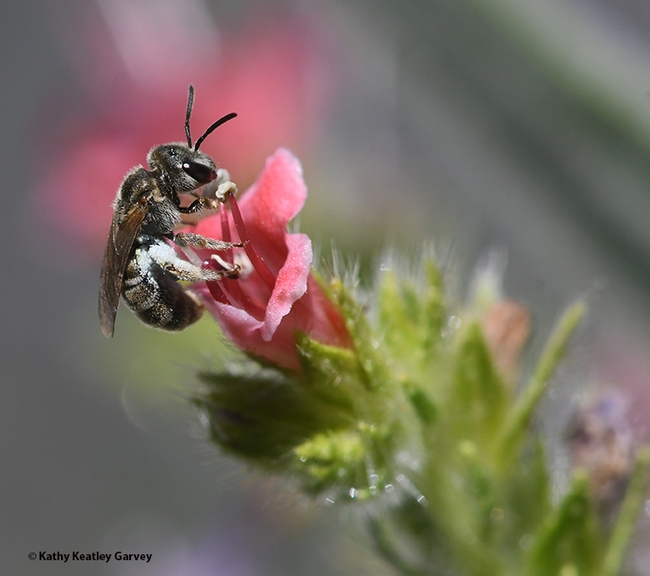
A sweat bee, Halictus tripartitus, nectaring on a tower of jewels (Echium wildpretii) in Vacaville, Calif. (Photo by Kathy Keatley Garvey)
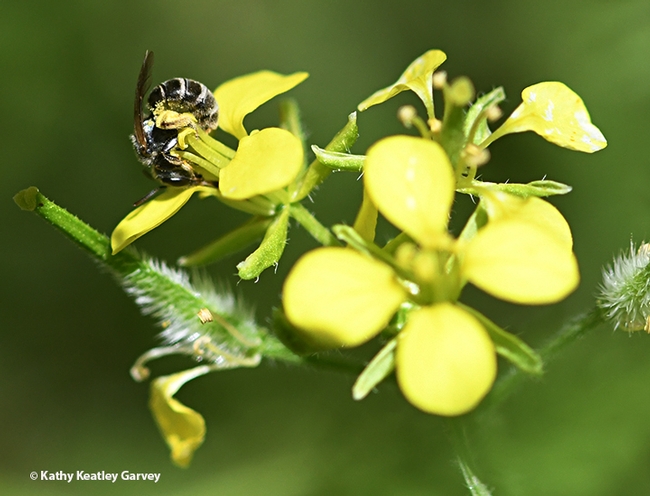
A sweat bee, Halictus tripartitus, twists as it forages on mustard in Vacaville, Calif. (Photo by Kathy Keatley Garvey)
Dragonfly vs. Bee: Catch of the Day
The red flameskimmer dragonfly (Libellula saturata) waits oh-so-patiently atop a bamboo stick at the edge of the pollinator garden. She's in...
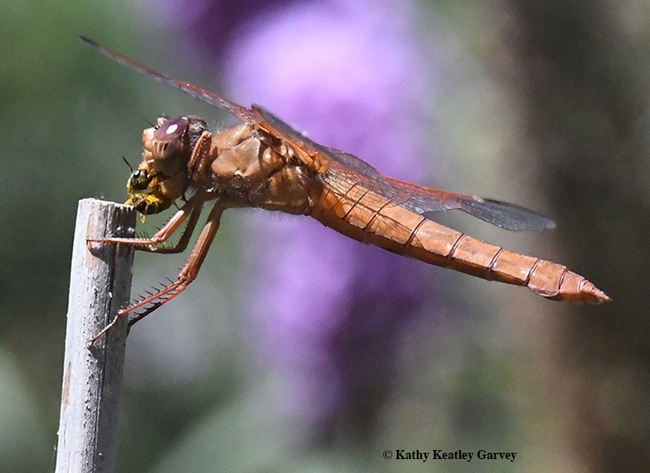
A red flameskimmer dragonfly (Libellula saturata) with her prey, a female sweat bee, Halictus ligatus, as identified by Robbin Thorp, distinguished emeritus professor of entomology at UC Davis. The gender of the flamekimmer identified by Kathy Claypool Biggs. (Photo by Kathy Keatley Garvey)
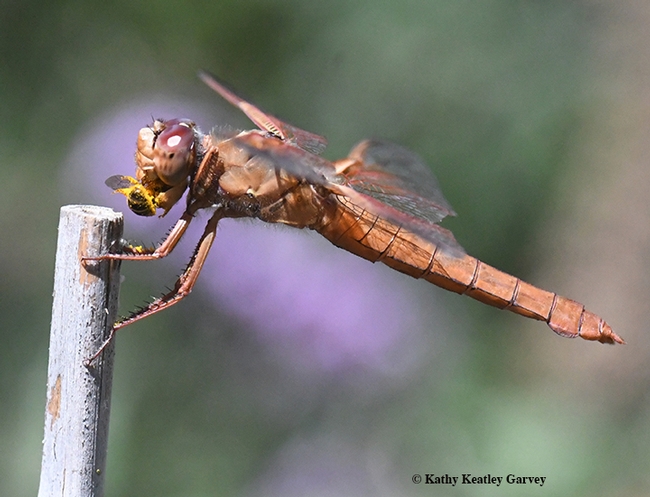
The red flameskimmer dragonfly adjusts her prey, a sweat bee. (Photo by Kathy Keatley Garvey)
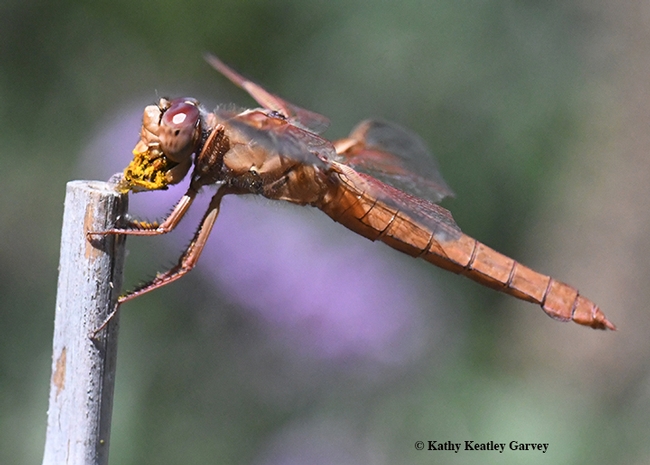
Beneath all of that pollen is a female sweat bee, the prey of this red flameskimmer. (Photo by Kathy Keatley Garvey)
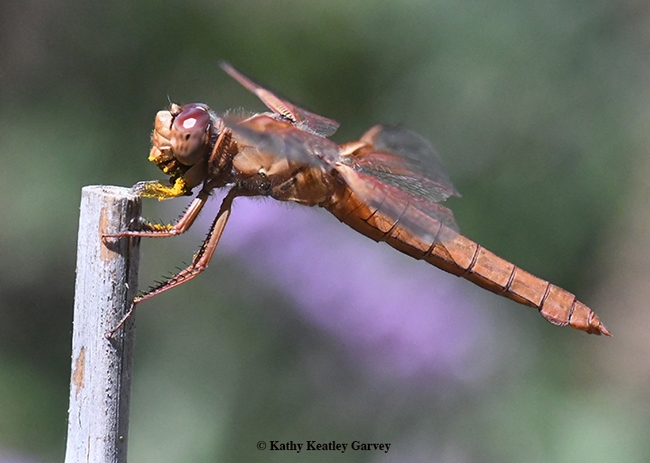
All gone. The red flameskimmer polishes off the last of the sweat bee. (Photo by Kathy Keatley Garvey)
How to Plan a Menu for a Crab Spider
Dear Crab Spider, Please don't eat the pollinators. You may help yourself to a mosquito, a crane fly, a lygus bug, an aphid, and a katydid, not...
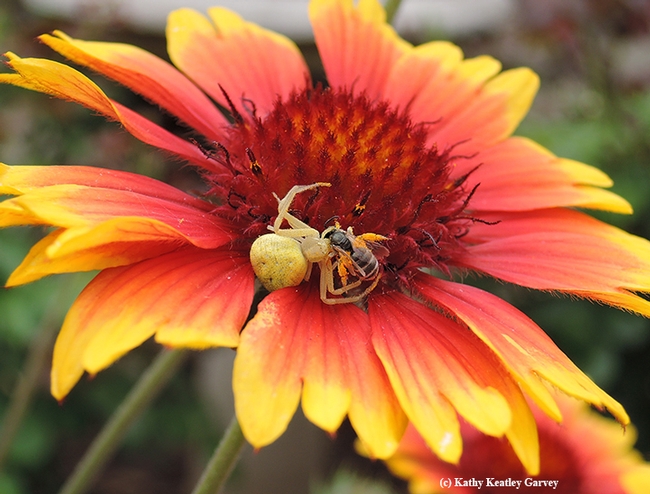
A crab spider dines on a sweat bee, a female Halictus tripartitus (as identified by native pollinator specialist Robbin Thorp, distinguished emeritus professor of entomology at UC Davis). (Photo by Kathy Keatley Garvey)
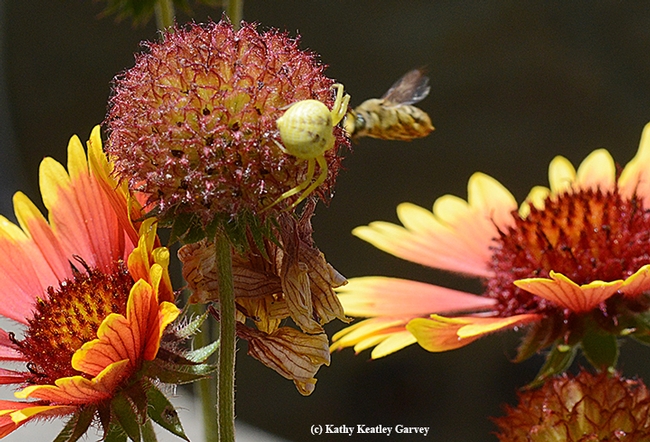
Missed! A male long-horned bee, probably Melissodes agilis, eludes the crab spider. (Photo by Kathy Keatley Garvey)
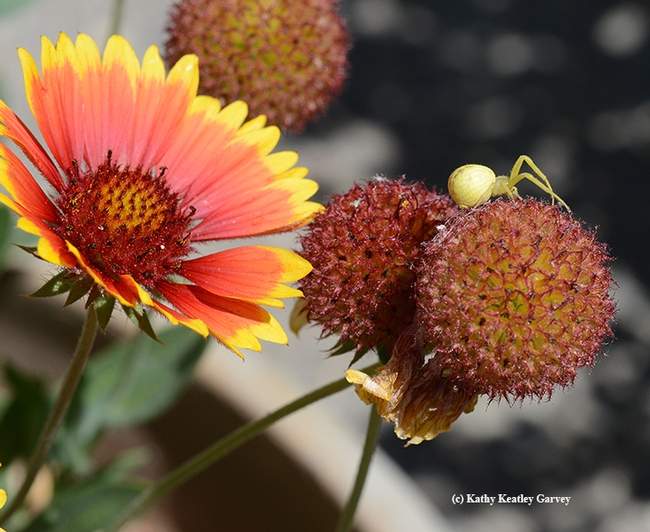
A crab spider on top of the world, the cone of a petal-less blanket flower (Gaillardia). (Photo by Kathy Keatley Garvey)
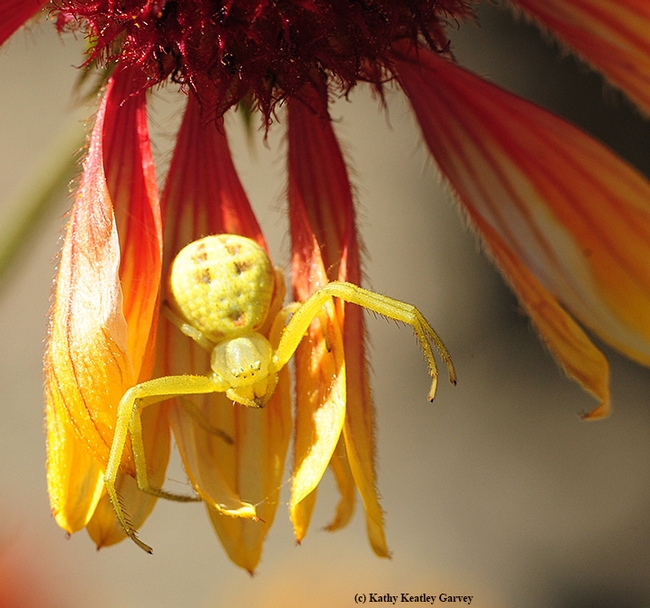
Hey, I can wait all day. And I will. I'm a Wait Watcher. (Photo by Kathy Keatley Garvey)
Going Native
Honey bees aren't the only bees out foraging. We saw our first native bee of the season on Jan. 25 at the Benicia Capitol State Historic...
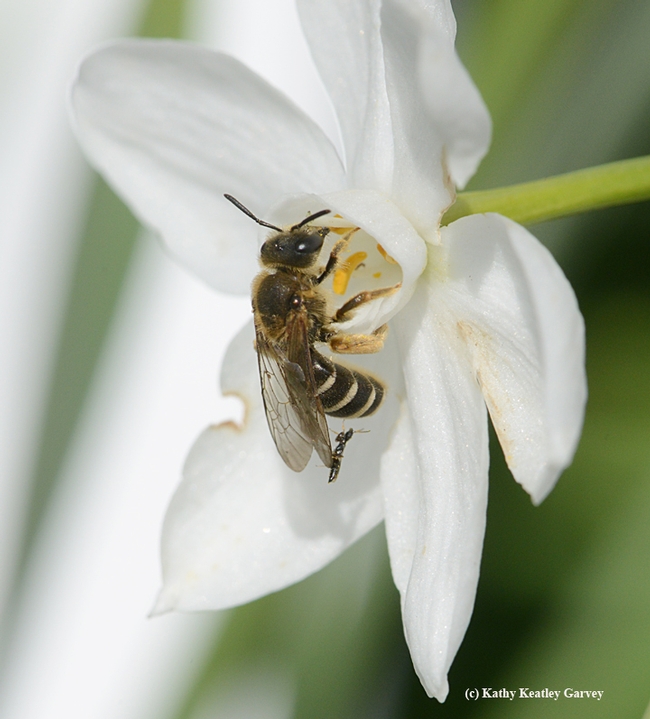
Female sweat bee, Halictus rubicundus, foraging Jan. 25 at the Benicia Capitol State Park. Note the tiny wasp, which appears to be a bethylid.(Photo by Kathy Keatley Garvey)
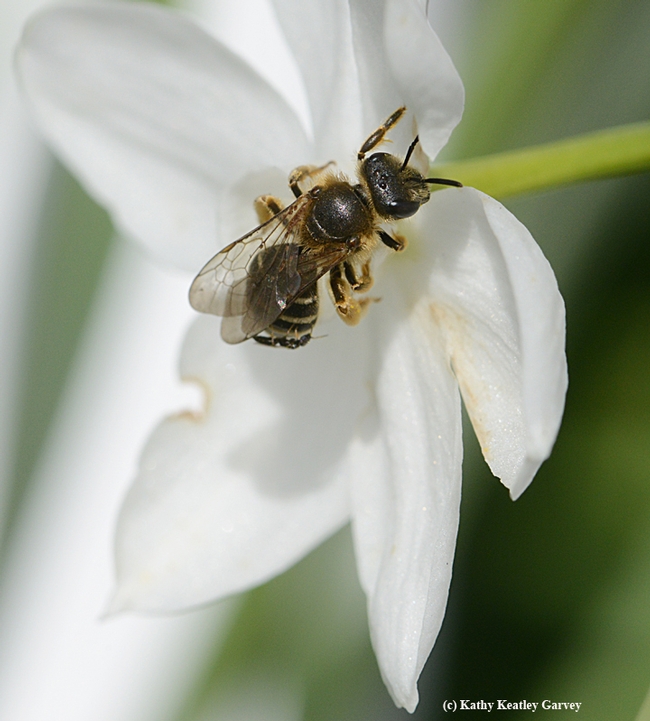
The head of the sweat bee,Halictus rubicundus. (Photo by Kathy Keatley Garvey)
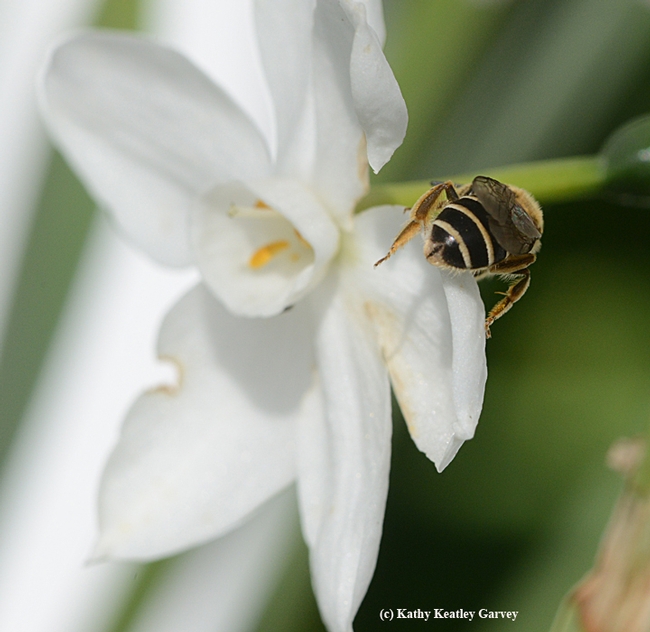
The female sweat bee, Halictus rubicundus, prepars for take-off. (Photo by Kathy Keatley Garvey)
Good Things Come in Twos, Too!
There's an old saying that "good things come in threes." Well, they also come in twos. When insect photographers manage to get two insects in the...
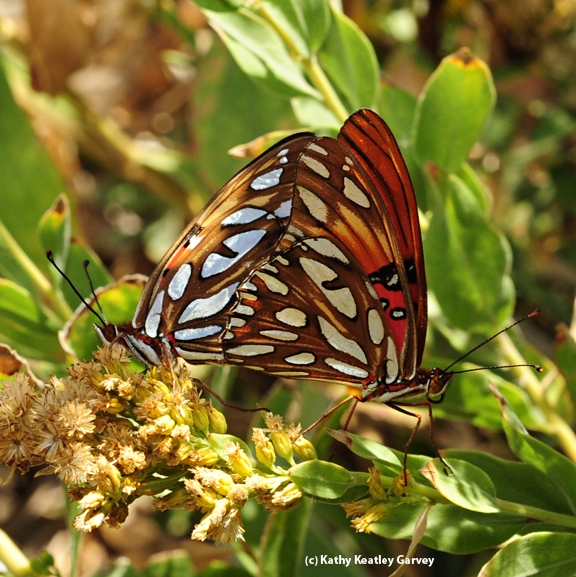
A pair of mating Gulf Fritillary butterflies on a passionflower vine. (Photo by Kathy Keatley Garvey)
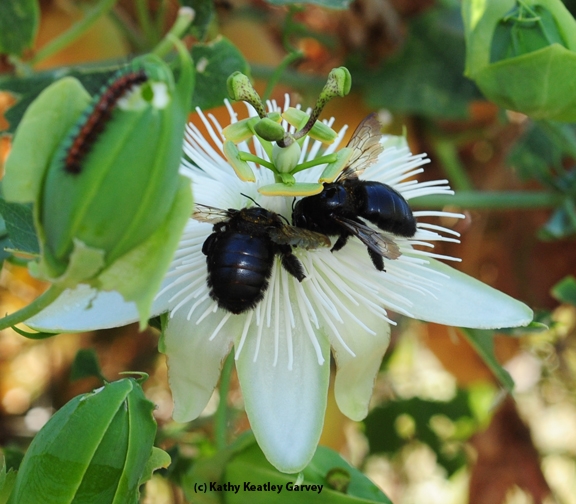
Two female Valley carpenter bees sharing a passion flower. Note the Gulf Fritillary caterpillar.(Photo by Kathy Keatley Garvey)
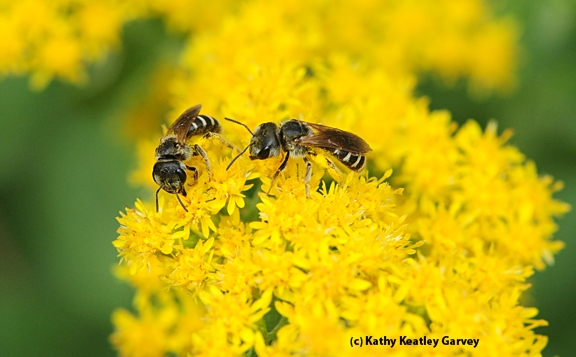
Two female sweat bees, Halictus ligatus, on a goldenrod. (Photo by Kathy Keatley Garvey)

